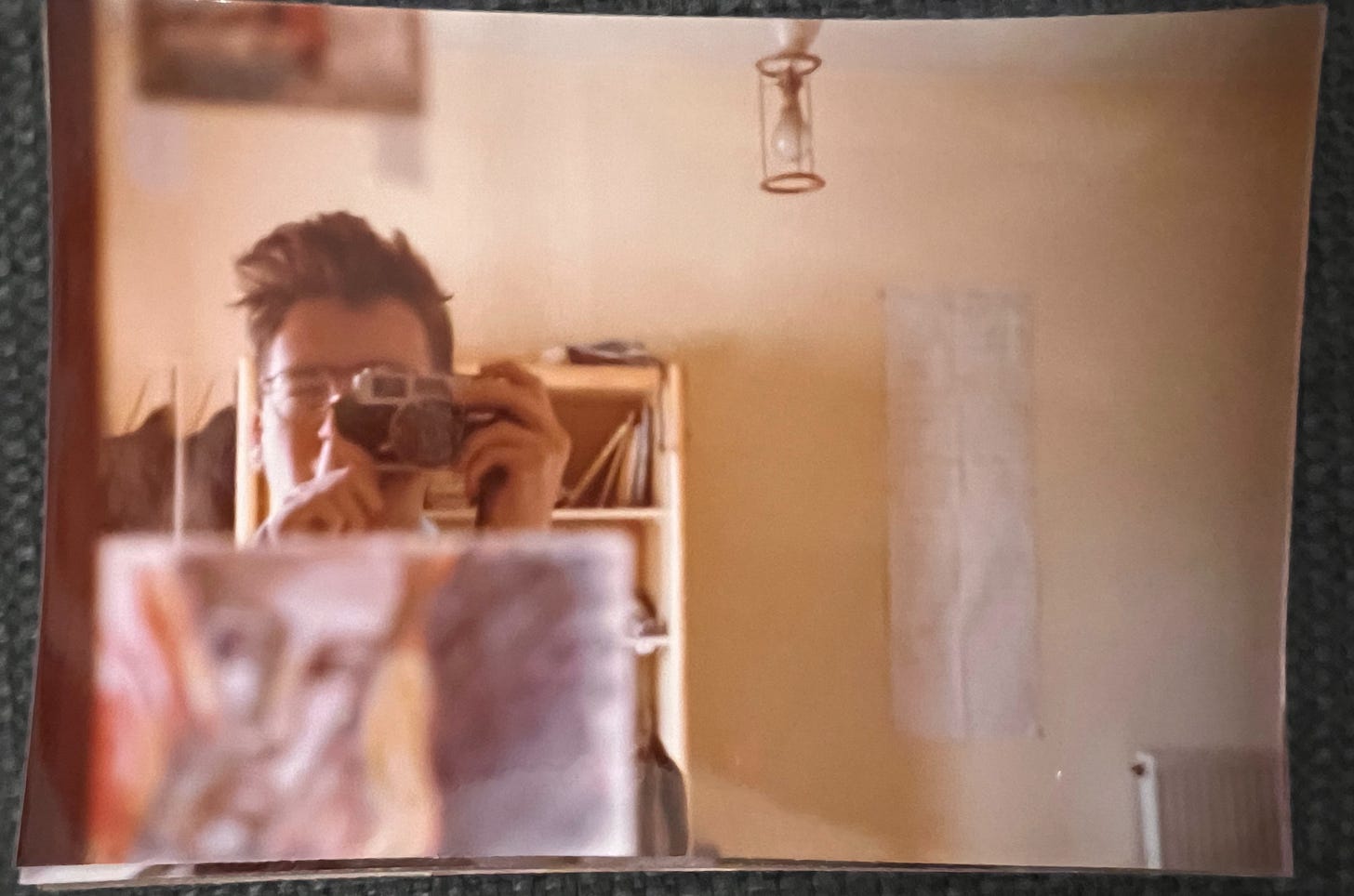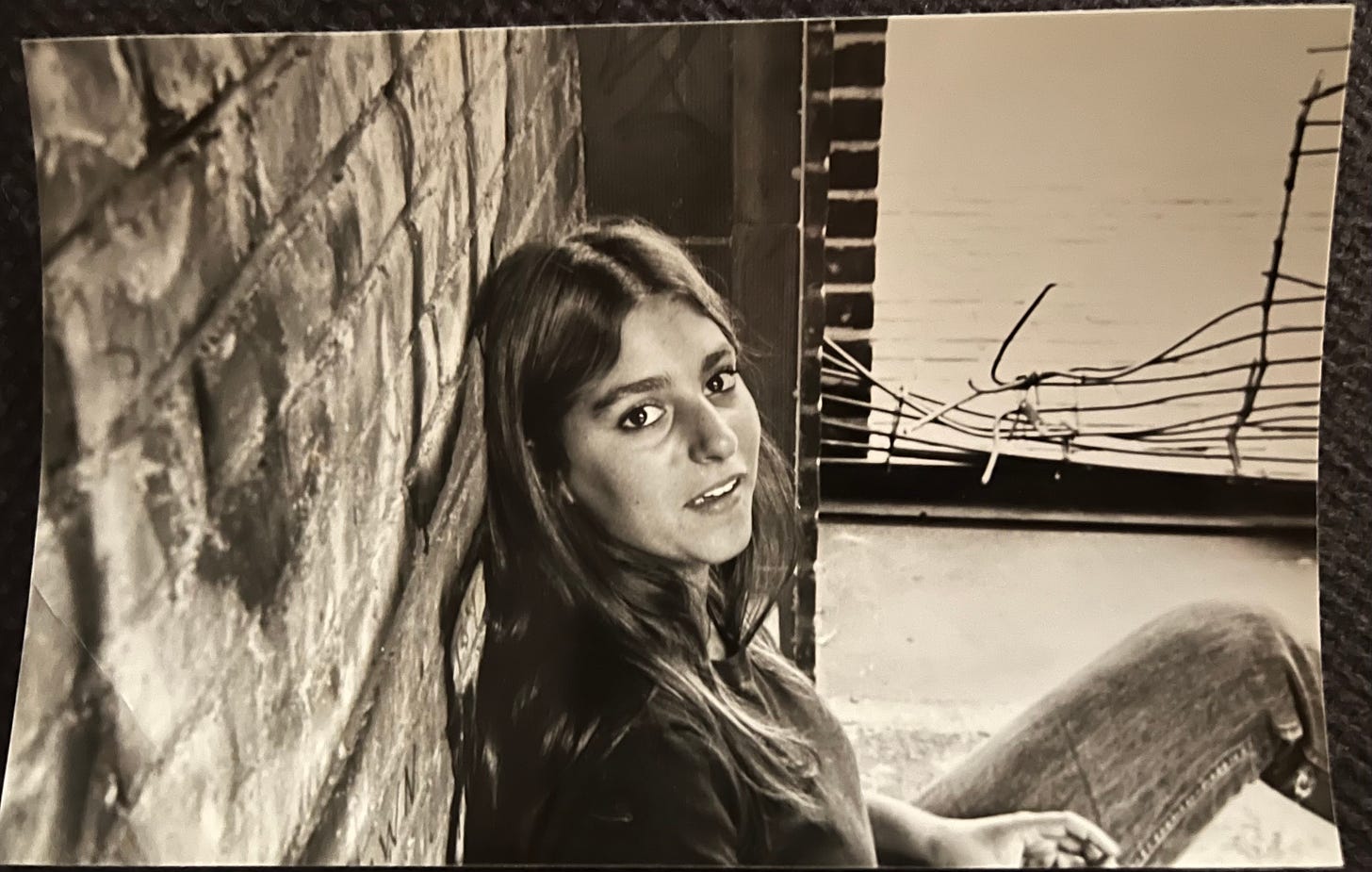A Beginner At Everything
Learning new skills later in life
In 2020, I began to study photography. I was in my mid-50’s. The only photography class I’d taken before that was in high school, decades earlier. As I worked through the process of learning about photography, I sometimes found myself wondering about that class I took long ago, about the images that I’d made then, and about the person I was when I’d made them.
I’ve been thinking about this because I was cleaning my basement this weekend and found a folder full of the photos and negatives that I’d made in my high school photography class, as well as a handful of pictures I shot in college.
A beginner at everything
Photography was an elective class in my ultra-academic high school, and I was drawn to it mostly because I was a bad student. Photography class seemed like it would be easy and fun. Photography itself? I had not a single thought in my head about what it was, nor was I particularly curious.
When I think back to the way I felt in that class, what I remember most is a deep sense of confusion. I didn’t know what to take pictures of. I didn’t know what made a good picture. I didn’t know how to find out. I remember the feeling though: I had a camera in my hand and I was more or less randomly pointing it at stuff. I didn’t know what to do, or what I was supposed to be making.
In other words, I didn’t know what good looked like.
I remember the dull grey quality of my prints, and not knowing why they looked the way they did. I remember that this made me unhappy. I knew that good pictures were different, but I didn’t know why exactly. I remember thinking that good pictures sparkled somehow, but I couldn’t figure out how to correct that. I was aware that there were an infinite number of variables that I might control, and that a good photographer would control, but that I didn’t know what they were, what their names were. Worst of all, I didn’t know how to learn any of this.
In these days of AI, knowing what good looks like is a critically important skill. Now that it’s so easy to ask an LLM to create stuff for us, how can we tell good output from bad? If we don’t know what good looks like, we won’t be able to do that. In my next post, I’ll talk about how I’m approaching this in my training work with Sense & Respond Learning.
Teaching what good looks like
You’d think that a good teacher and a well-structured class would have solved this, and that might have been true. Certainly, my high school class didn’t spend much time looking at pictures, trying to teach what good looks like. The class was mostly built around the technical elements of photography: how to load film in and out of a camera, how to work in a darkroom to develop and print it.
It didn’t help that I had been a bad student most of my high school years. One thing I had learned, somehow: teachers were not there to teach me. Instead, they were authority, punitive authority, not sources of knowledge.
So when I found my old portfolio—what a find!—I was disappointed but not surprised to find this teacher’s note, handwritten on my portfolio in precise script.
“Josh, only the two sneakered feet are acceptable creatively. Portraits are badly printed & must be printed again. Your are not applying yourself - therefore I will give you an Inc. with 2wks to do the job carefully.”
Sigh.
To be fair, I probably wasn’t applying myself. I wouldn’t learn how to do that for another three or four years. Learning how to learn, how to apply myself—no one ever taught me that. I had to teach that to myself, and I spent most of my college years learning how to do just that. Over the years, I’ve come to think about learning itself as a skill to be cultivated. I’ve spent most of my life learning how to learn.
Education is wasted on the young
One of the most wonderful things about learning something like photography at my age is the opportunity to be a beginner at something, but not a beginner at everything.
At this point in my life, I have a foundation to build on. I’ve spent years as a designer, building a visual vocabulary. I’ve spent years as a professional, learning how to work. I’ve spent years as a learner, learning how to learn. How to ask questions. How to get what I need from teachers, leaders, and coaches. And critically, learning how to keep my ego in check so that I can learn from people who know more than I do.
Anyway, here are some of the better pictures from that portfolio, if you’re interested. I think they’re better than Ms. What’sHerName did. But yeah, she was right that the print quality is pretty bad.
Next post: what does good look like when you can ask AI to make it for you?






Yes! And why I just took a qigong class...
Thanks for the inspiration, Josh.
Your note about knowing "what good looks like" reminded me of a discussion with a potential investor who criticized our MVP for being “below their usual quality standards.”
My reply was simple: true, but it solves an un(der)served problem and already creates enough value for users to switch and pay — within months of launch. Why wait for perfect when good enough is good enough to learn, grow, and deliver real value?